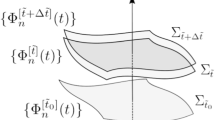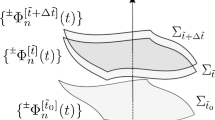Abstract.
An essential feature of confining systems is the existence of channels into which probability flux can enter only for short spacetime intervals, but where it can never, irrespective of the total energy involved, propagate to asymptotic distances. It is demonstrated in a schematic quantum-mechanical model that this situation, which is unknown in ordinary scattering theory, does arise in a representation obtained through a non-unitary similarity transformation, and therefore involving a nontrivial metric. In the “confined” channels of this representation, propagation is described by Green’s functions having a complex conjugate pair of poles in momentum space instead of the usual real-axis pole. On the asymptotically accessible subspace, the S matrix is unitary, but finite-time unitarity for the total system becomes visible only when using the nontrivial metric. It is suggested that field-theory propagators with complex-conjugate pairs of singularities as obtained in several QCD studies, which seem to contradict finite-time unitarity, can in fact be imbedded into a unitary framework along the line illustrated by this model. A further conjecture is that interacting QCD fields differing from the perturbative ones by a non-unitary similarity transformation form an essential ingredient for a theory of confinement.
Similar content being viewed by others
Author information
Authors and Affiliations
Additional information
Received June 17, 1999; accepted for publication August 23, 1999
Rights and permissions
About this article
Cite this article
Stingl, M. Confined Subspaces: A Schematic Model. Few-Body Systems 29, 7–23 (2000). https://doi.org/10.1007/s006010070006
Issue Date:
DOI: https://doi.org/10.1007/s006010070006




